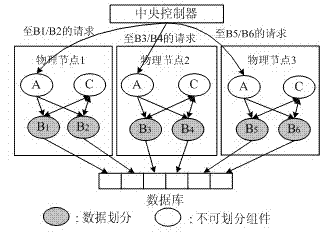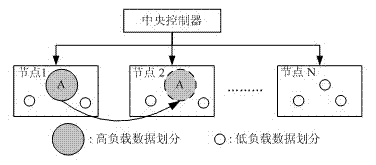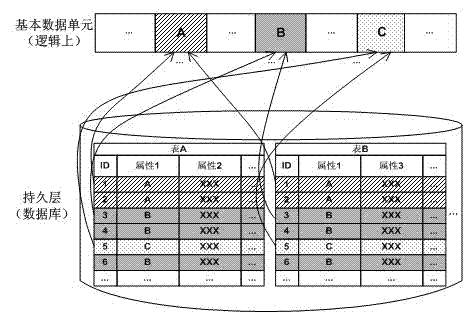Method for achieving dynamic partitioning and load balancing of data-partitioning distributed environment
A technology of distributed environment and data division, applied in the direction of resource allocation, multi-program device, etc., can solve problems such as excessive granularity, and achieve the effect of improving work efficiency, increasing resource utilization, and wide applicability
- Summary
- Abstract
- Description
- Claims
- Application Information
AI Technical Summary
Problems solved by technology
Method used
Image
Examples
Embodiment Construction
[0021] Dynamic partitioning enables the basic data units that make up a data partition to be moved to other partitions at runtime and are no longer fixed. Load balancing is mainly divided into three parts: local load balancing, global load balancing, and local resource utilization. Local load balancing balances the load between partitions by moving basic data units between partitions within a single node. The movement of basic data units occurs mainly in memory, is lightweight, and can be performed quickly. The data division after local load balancing is beneficial to improve the efficiency of global load balancing and prevent the occurrence of load balancing failure. For local resource utilization, if the monitoring finds that the use of node resources is insufficient, consider increasing the number of data partitions; otherwise, reduce the number of data partitions. Such an adjustment can improve resource utilization. For example, when the multi-process rate is too low, it...
PUM
 Login to View More
Login to View More Abstract
Description
Claims
Application Information
 Login to View More
Login to View More - R&D Engineer
- R&D Manager
- IP Professional
- Industry Leading Data Capabilities
- Powerful AI technology
- Patent DNA Extraction
Browse by: Latest US Patents, China's latest patents, Technical Efficacy Thesaurus, Application Domain, Technology Topic, Popular Technical Reports.
© 2024 PatSnap. All rights reserved.Legal|Privacy policy|Modern Slavery Act Transparency Statement|Sitemap|About US| Contact US: help@patsnap.com










